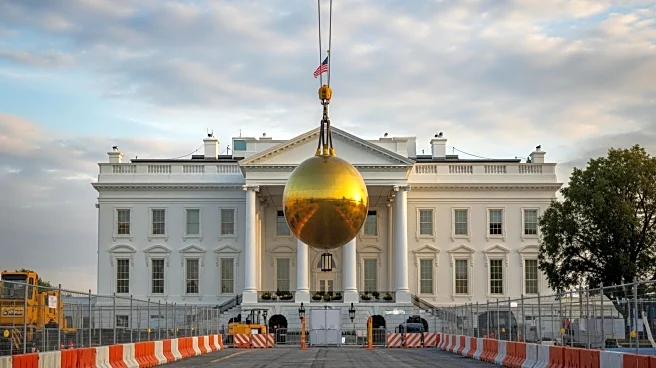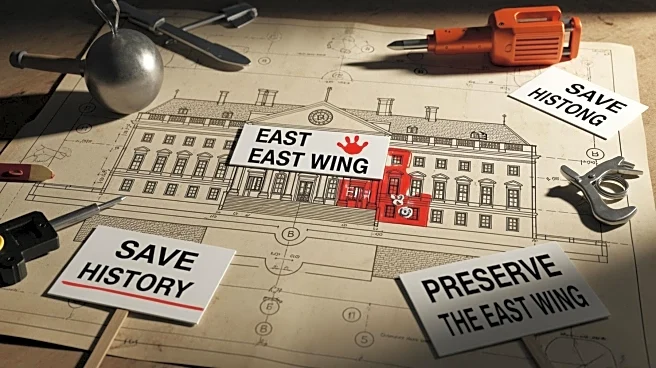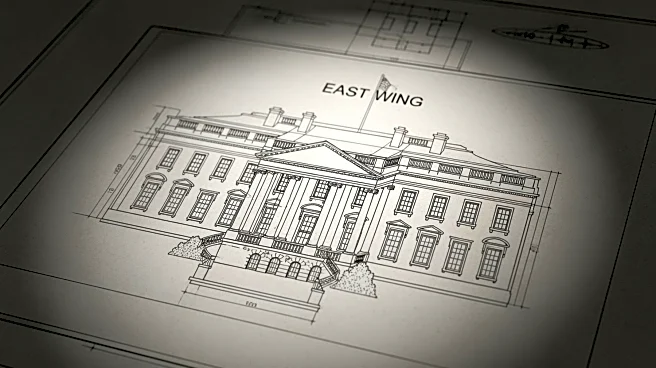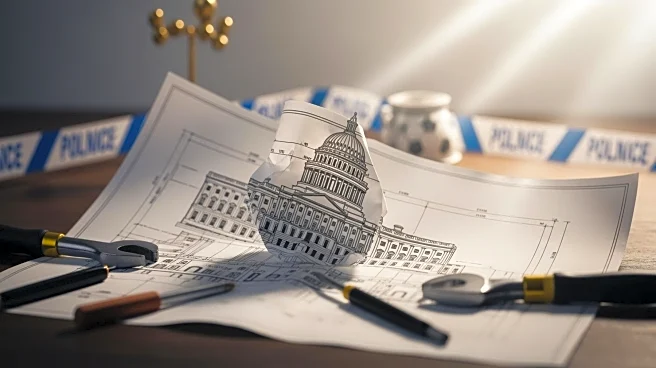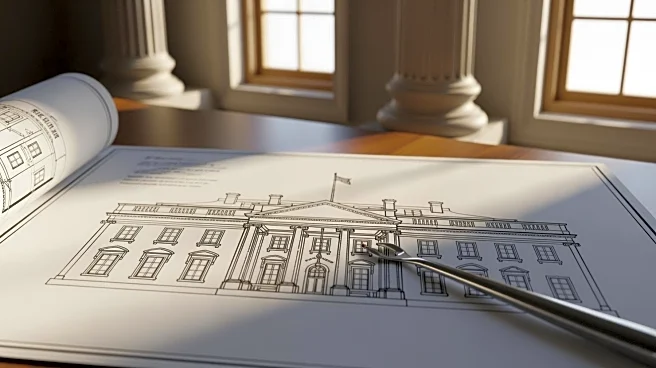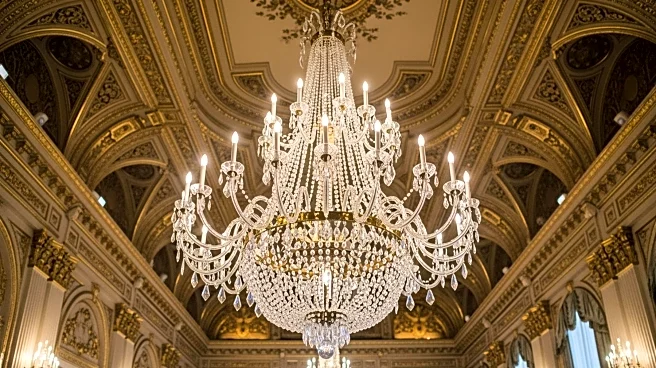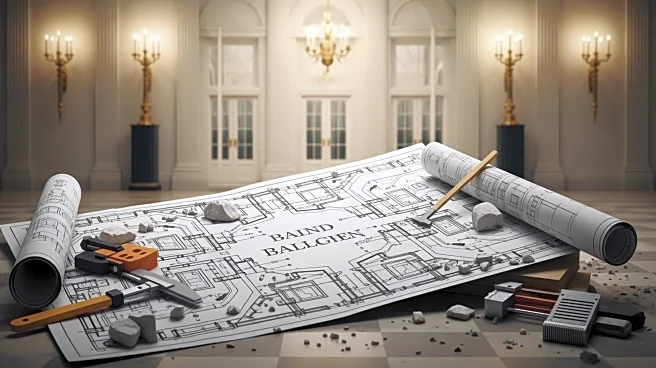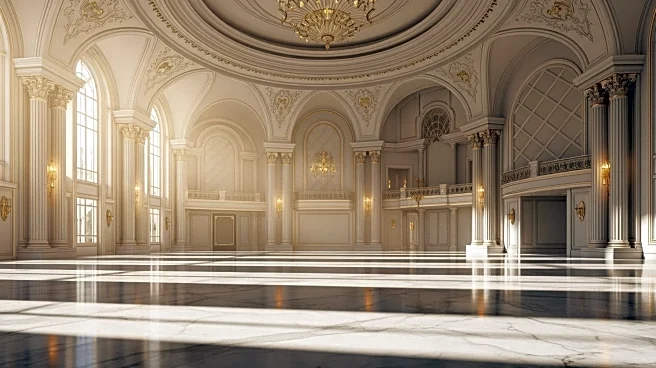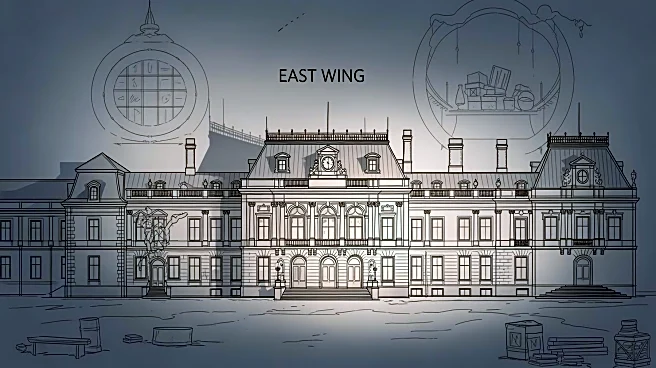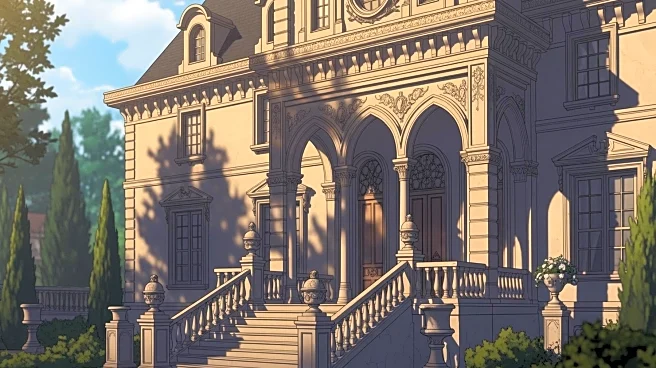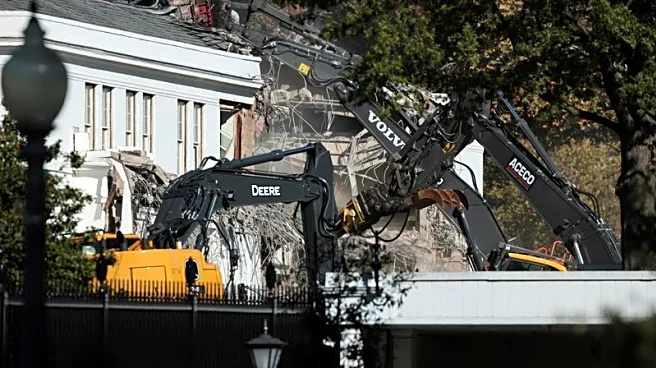What's Happening?
In a significant shift from initial plans, President Trump has decided to demolish the entire East Wing of the White House to make way for a new ballroom. Originally intended to be built adjacent to the existing
structure, the decision to remove the East Wing entirely was made after consultations with architects. The demolition has begun, prompting criticism from former first lady Hillary Clinton and the National Trust for Historic Places, which has called for a halt to the project pending a public review.
Why It's Important?
The complete demolition of the East Wing underscores tensions between modernization efforts and historical preservation. The project has sparked debate over the appropriate use of the White House and the transparency of decision-making processes. Critics argue that the new construction could disrupt the architectural harmony of the White House and set a precedent for future alterations without adequate public input. The funding and motivations behind the project also raise concerns about potential conflicts of interest and the influence of private donors.
What's Next?
The National Trust for Historic Places is urging a pause in demolition to allow for a public review process. This could lead to legal challenges or delays in the project. The administration may face increased scrutiny and opposition from preservationists and political figures. The outcome of this controversy could influence future policies on the preservation and modernization of national landmarks.
Beyond the Headlines
The decision to demolish the East Wing highlights broader issues of governance, transparency, and the role of private funding in public projects. It raises questions about the balance between preserving historical integrity and accommodating modern needs. The project may also impact public trust in government decision-making and the perceived priorities of political leaders.
